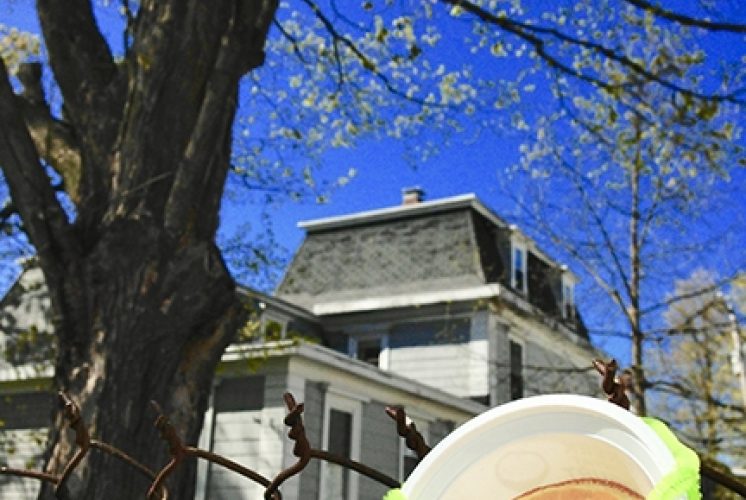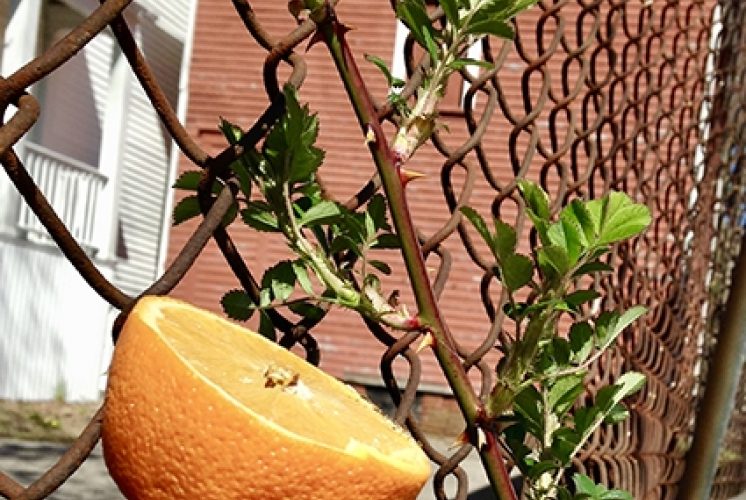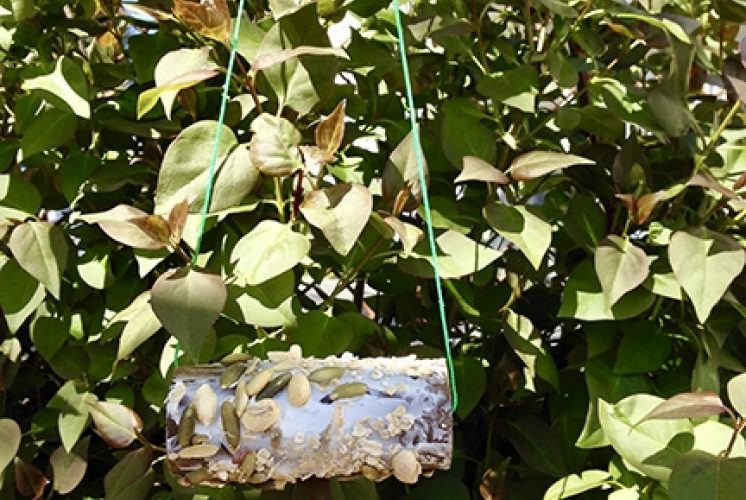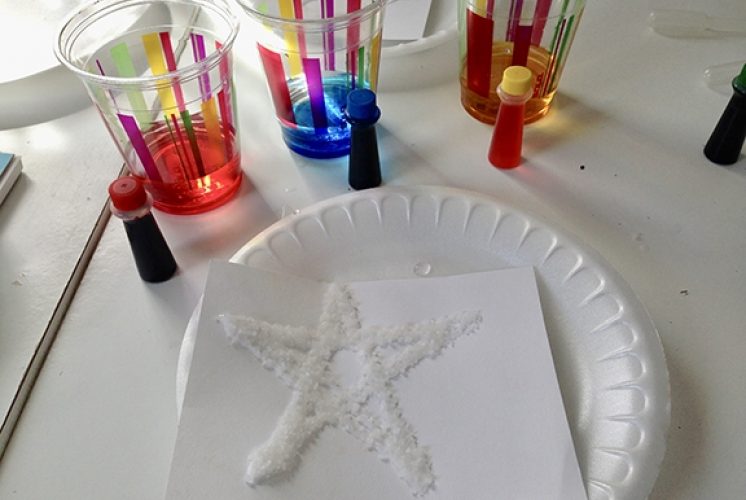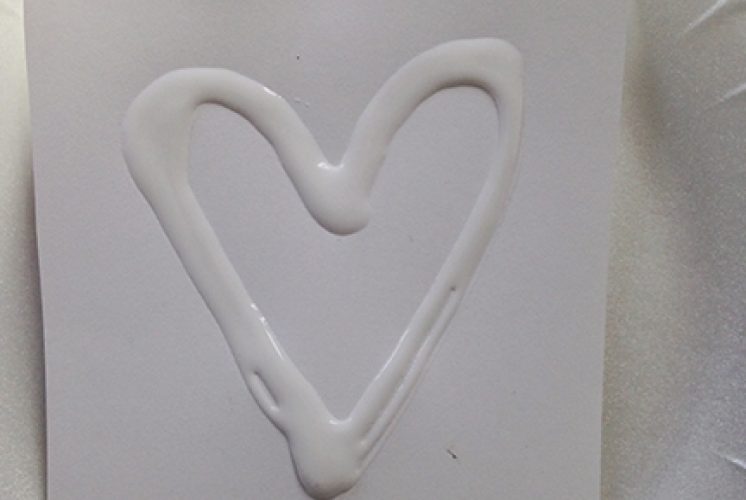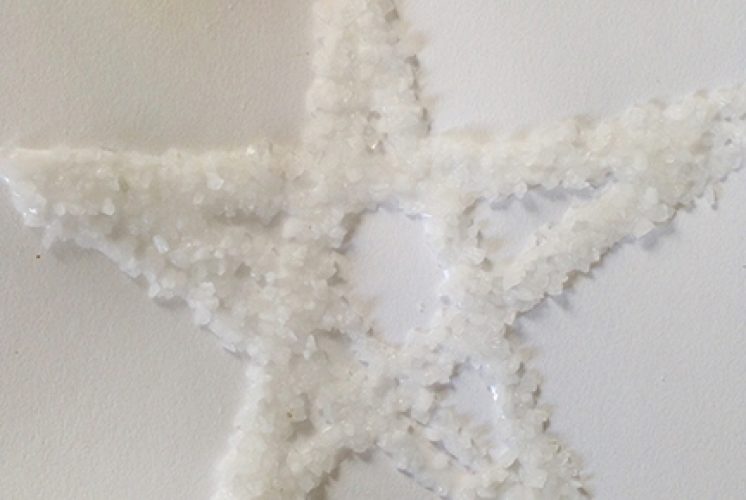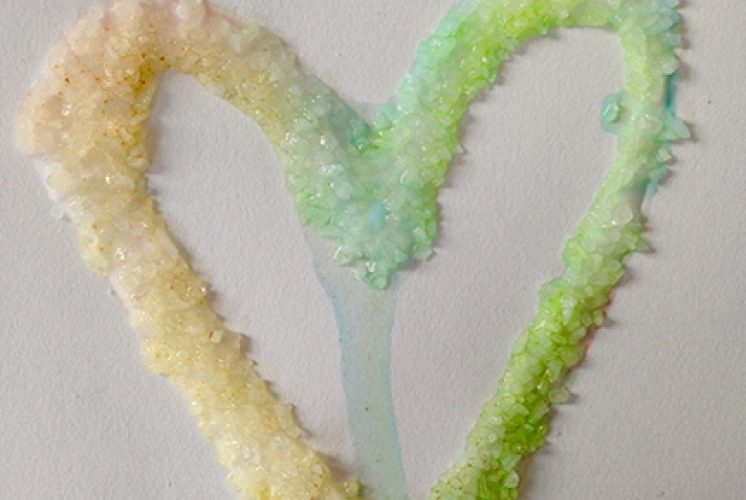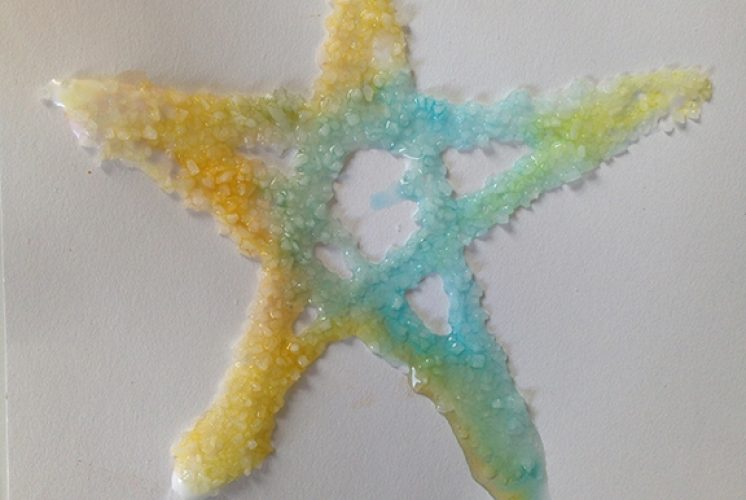The Museum Blog
Category: Enriching Experiences
First Friends at Home: Things that FLY
By Meredith Brustlin, CMNH Educator
This week’s First Friends Friday was all about things that can FLY! We did a bunch of rhymes about bugs, insects, and birds!
Hello Song:
Hello it’s time to play
Let’s have some fun today!
Let’s clap our hands
And wiggle our toes
A hug...and a kiss...and away we go!
Hello (insert name here) it’s time to play
We’ll have so much fun...hooray!
Open Them/Shut Them (action song)
Open them, shut them
Open them, shut them
Give a little clap-clap-clap
Open them, shut them
Open them, shut them
Lay them in your lap-lap-lap
Creep them, creep them, creep them, creep them
Right up to your chin-chin-chin
Open up your little mouth…
But do not let them in!
Cuckoo Clock (Action Rhyme/Bounce)
(Rock babies back and forth and then bounce them up in the air for each cuckoo)
Tick-tock, tick-tock
I’m a little cuckoo clock!
Tick-tock, tick-tock
It’s one o’clock…
Cuckoo!
Tick-tock, tick-tock
I’m a little cuckoo clock!
Tick-tock, tick-tock
It’s two o’clock…
Cuckoo! Cuckoo!
It’s three o’clock…
It’s four o’clock…
Etc!
Beehive (action rhyme)
Here is the beehive
But where are the bees?
Hiding inside where nobody sees!
Soon they’ll come buzzing out of the hive…
One! Two! Three! Four! Five!
Buzzzzzzzzzz!
I’m a little Blue Jay (bounce)
I’m a little Robin and I wiggle all day
If you get too close to me I’ll FLY away!
I’m a little Blue Jay and I wiggle all day
If you get too close to me I’ll FLY away!
I’m a little Chickadee and I wiggle all day
If you get too close to me I’ll FLY away!
I’m a little Cardinal and I wiggle all day
If you get too close to me I’ll FLY away!
Wise Old Owl (action rhyme)
There is a wise old owl,
With a pointed nose,
He has pointed ears,
And claws for toes!
He sits in a tree,
And looks at you,
Then he flaps his wings and says:
Whoooooo! Whoooooo!
Everyone can shake! (prop song)
Everyone can shake shake shake
Everyone can shake shake shake
Everyone can shake shake shake
And now it’s time to stop!
Everyone can tap tap tap
Everyone can tap tap tap
Everyone can tap tap tap
And now it’s time to stop!
Everyone can clap clap clap
Everyone can clap clap clap
Everyone can clap clap clap
And now it’s time to stop!
Everyone can wave, wave, wave
Everyone can wave, wave, wave
Everyone can wave, wave, wave
And now it’s time to stop!
Goodbye Rhyme (action rhyme)
This is big, big, big
And this is small, small, small
This is short, short, short
And this is tall, tall, tall!
This is fast, fast, fast
And this is slow, slow, slow
This is yes, yes, yes
And this is no, no, no
This is hi, hi, hi
And this is bye, bye, bye!
Pete the Cat Party- Painting Guessing Game
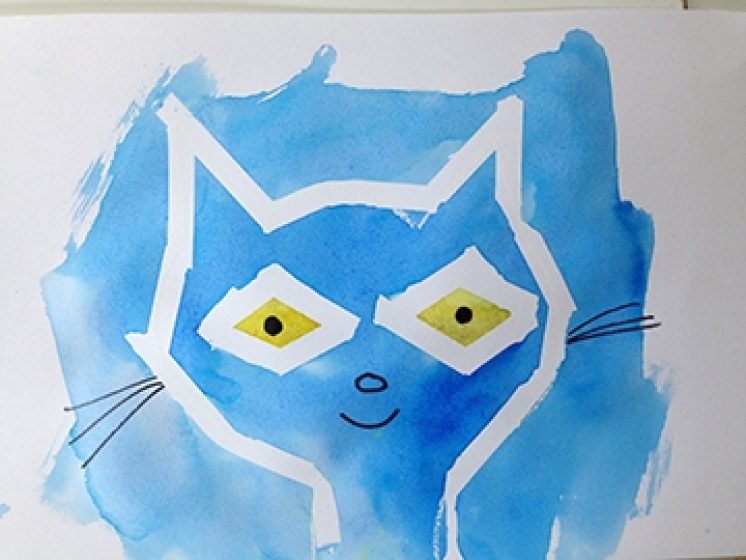
By Colie Haahr, CMNH Educator
Thank you for checking out our Pete the Cat Party video! If you followed along with the storytime, you know that Pete the Cat LOVES his white shoes, and his red shoes, and his blue shoes! He is even okay with his wet shoes! This blog post will walk you through setting up an art project guessing game, where kids can guess what Pete stepped in to change the color of his shoes.
Materials:
- Paper- cardstock, construction paper, sketch paper
- Watercolor paints
- Paint brush
- Water cup
- White crayon
- Drawings prepped ahead
Directions:
Prep Ahead: For this project, you will need to draw some pictures with a white crayon ahead of time. Each drawing should be an item that is mostly one color, and that we can imagine might change the color of Pete’s shoes. Here are some ideas:
- Green: Spinach, Peas, Avocado
- Blue: Blueberries
- Purple: blackberries, grapes
- Red: Strawberries, Raspberries, Cherries
- Orange: Oranges, Carrots
- Yellow: Buttercups or Dandelions
- Brown: Coffee, Chocolate Cake
- Black: Olives
- Draw a picture of each item on a piece of paper using a white crayon
- Set up the water colors, paintbrush, and water cup for painting
- Play the game! Ask, “what do you think Pete the Cat could step in to change his shoes a different color?” Take a few guesses.
- Now, choose one color and paint one of the pieces of paper, and see what happens! The picture you made with the crayon should magically appear
- The white crayon creates a wax resist, so the watercolors will not soak into the paper, and you can see the drawing in white.
- You can give away what color to paint each item, for example, “try painting this one red, and guess what is in the picture,” or let kids choose a color, and then ask “Is that what color strawberries are, or are they a different color?”
- Play the game for each picture you made ahead of time.
Optional: kids can try coloring with white crayons to create a wax resist, then painting over it.
Optional: you can also do this activity using tape to create an outline of Pete the Cat, and paint over it, then take the tape off when the painting is dry to see the design.
Backyard Birding- Make a Bird Feeder
By Colie Haahr, CMNH Educator
Backyard birding is a great way for kids to practice making observations, and to learn about ecology and biology! Learn how to make 2 easy bird feeders to attract special birds to your yard, especially Orioles, who like oranges and other fruits.
If you have not tried backyard birding before, there are a few things to think about before you start. First, setting expectations for seeing birds. Even if you do a great job setting up a feeder with food that birds like, you may not see birds right away, or draw in unique birds right away. It’s a good idea to let kids know they may not see birds as soon as the feeder goes out. When scientists do research, they do a lot of observation and patient waiting to see results!
The food you provide is important, too, and birds need water! It may take some time to establish your backyard as a consistent food source for birds, so don’t give up if birds do not appear right away. All animals need water, so if you are able to provide clean water for your backyard animal friends, then you may see more of them more often. Birds do not have hands, obviously, so they use their beaks for many different things the way we use our hands. Different birds have different beaks that are adapted to where they live and what they eat. There’s a great book called Beaks! by Sneed B. Collard III that helps to illustrate this to kids. When you put out food for the birds keep in mind not only what they eat, but how they eat it and whether they can access it with their beaks.
Something else to keep in mind is the season. Some birds are only going to be around for a few months of the year because of migration, and others will be around throughout the year. Some birds migrate, or move, to warmer areas for the winter so that they can find more food. Migrating is a behavioral adaptation, or change in behavior, that helps an animal to survive. Some foods are harder for birds to find in the winter, like insects and fruits. The temperature gets too cold for some birds, but surprisingly many birds can withstand very cold winter temperatures. Spring is a great time to observe birds, and you may even get to see some nests being built.
Location is important, too. If there is not a lot of natural habitat near your backyard, you may see fewer bird species. To see “new” or special birds, you can try visiting their habitat, like a local conservation area. The Bellamy Preserve in Dover is a great place to see birds, and since there are open fields as well as the bay nearby, you can see shore birds and forest birds on the same trip. Ideal bird habitats may also be ideal tick habitats, so be mindful of your clothing choices, and in the springtime boots will be necessary for the mud.
Finally, bird identification can be really tricky even for grown ups! Instead of focusing strictly on bird identification, try setting up an observation chart that kids can use independently. This chart can include the day, time, number of birds, and what the bird was doing. For example, at lunch time Sally Scientist saw one bird that was hopping, and three birds that were flying. She didn’t see any birds that were eating or drinking, so they must not have known it was lunch time. All silliness aside, noticing whether animals eat when people eat is a great observation! A chart that kids can check off might work well:
Sally Scientist’s Observations:
Day/Time | Birds Hopping | Birds Flying | Birds Eating | Birds Drinking |
Monday lunch | / | /// | 0 | 0 |
Making the Bird Feeders:
In the video you will see 2 different ways to make a bird feeder. One style of feeder is made by adding seeds to a paper towel roll or a pine cone, and it is a little messy, but can be done outdoors to cut down on spills. The second style of feeder is made by using an orange as the food rather than bird seed, and this is done to attract Orioles because they like to eat fruit. This can be done by carefully attaching an orange half to a branch, or creating a small feeder that fits an orange inside of it, and has a perch for the birds to sit on while they eat.
Materials Needed:
- Oranges
- Seeds
- Paper towel tube
- Peanut butter, sun butter or crisco
- String
- Pipe cleaners
- Hole punch
- Small jar or yogurt cup
- Stick for a perch (sturdy)
- Optional: jelly - this can be messy, and less messy oranges work well!
Directions:
- Tube Feeder: The first feeder design is simple, but can be a little messy. For this feeder, you will need nut butter or crisco, a paper towel tube, string, and bird seed
- Use a tray or plate to hold the bird seed (a small mound should work)
- Cut a paper towel tub in half so that one tube makes two feeders
- Carefully add nut butter or crisco to the outside of the paper towel tube.
- Once the tube is mostly covered, gently roll it in the birdseed. The birdseed will stick to the tube, but keep it on a work surface like a plate until it’s time to hang it up
- Use a string to hang up your feeder by threading it through the tub and tying the two ends in a knot. Hang your feeder up in a tree
- Orange Feeder: For this feeder, you need an orange cut in half, sticks, a container, hole punch, and string to hang it up. The orange feeder is designed to attract Orioles because they enjoy eating fruit, especially oranges! Orioles also like jelly (not jam), but it is a little stickier and messier, so we suggest trying oranges first.
- First, cut the orange in half so that the birds can get to it
- The easiest way to make an Oriole feeder with oranges is to use a sturdy branch and poke the orange half directly onto a tree
- Another method is to use a small container, like a yogurt cup, to hold the orange. Use a stick to add a perch, add holes with a hole puncher, and use a pipe cleaner or string to hang it up.
Links:
https://www.allaboutbirds.org/news/types-of-bird-seed-a-quick-guide/?pid=1142
https://www.audubon.org/news/make-orange-feeder-orioles
https://www.allaboutbirds.org/guide/Baltimore_Oriole/lifehistory
https://feederwatch.org/blog/one-peanut-can-go-a-long-way-for-a-carolina-wren/
Wacky Art: Raised Salt Paintings
By Colie Haahr, CMNH Educator
This fun art project can double as a science project! Kids make designs with liquid glue, add salt, then carefully add some colors and watch what happens! The liquid water colors should be absorbed by the salt, and move along the glue and salt design right before your eyes!
Materials Needed:
- Card stock or thick paper, construction paper works
- Tray or plate work surface
- Salt in a dish with a spoon to scoop it
- Liquid glue - that kids can use on their own
- Liquid watercolors or food coloring mixed with water
- Pipette, eye dropper, or spoon
Directions:
- First, make a design on the cardstock using only glue- lines work well!
- Next, add salt to the glue so that the glue design is covered in salt. Gently pour the extra salt back onto your tray or into the trash. Similar to what you would do with glitter and glue- you want the salt covering all of the glue
- Use the pipette to carefully add colors to your design. Only add a little bit of color at a time so you can see the colors move. Only add color to the glue.
- The color should magically spread on your design as the salt absorbs the liquid
- Let your project lie flat to dry, otherwise the colors will spread where there is no glue!
Experiment:
- Here are a few ideas you can try to make this art project into an experiment:
- Try using different kinds of salt, and see which kind works best (larger or smaller grains). Make a prediction before you try each one!
- Try this project with sugar and with salt (use the same design for each), and see which works better, or if sugar works at all.
- Try color mixing by using primary colors to do the project. Can you get them to mix? Why or why not?
Links:
www.cbc.ca/parents/play/view/art-science-salt-glue-watercolour-experiment
Wacky Art: Tin Foil Printmaking
By Meredith Brustlin, CMNH Educator
This printmaking is so fun and easy to do with materials you probably already have at home! The best part is it can be done over and over again with very little clean-up in between! Here’s how to get started:
Materials Needed:
- Piece of paperboard (like a cereal box) or cardboard, slightly bigger than an average piece of paper (10in X 12in-ish)
- Piece of aluminum foil that is large enough to cover the paper/cardboard. If needed, you can use two seperate pieces to cover the board
- Tape
- Acrylic or tempera paint
- Cardstock, printer, or construction paper
- A paintbrush
- Q-tips
- Paper towels or old kitchen rags
Directions (prep):
- Make your printing board
- Cut your piece of paper/cardboard to the appropriate size
- Cover with aluminum foil
- Fold the foil over the piece of cardboard and tape on the back so it does not move around
- Prep/gather paint, brushes, q-tips, paper towels, etc
Directions (activity):
- Drizzle a small amount of paint onto your printing board
- NOTE: Start with quite a small amount, you do not want too much paint on there for this activity--you can always add a bit more!
- Use the paintbrush to spread it out across the printboard so it is completely covered
- Use q-tips to quickly draw designs and pictures directly into the paint
- NOTE: Do this fast! Since you are using such a small amount of paint, it will dry quickly
- Place a piece of paper onto the painted printboard and gently press down
- Peel away to reveal your print!
- Use a damp paper towel to clean your printboard, dry it off, and try again!
Paper Bag Mini Books
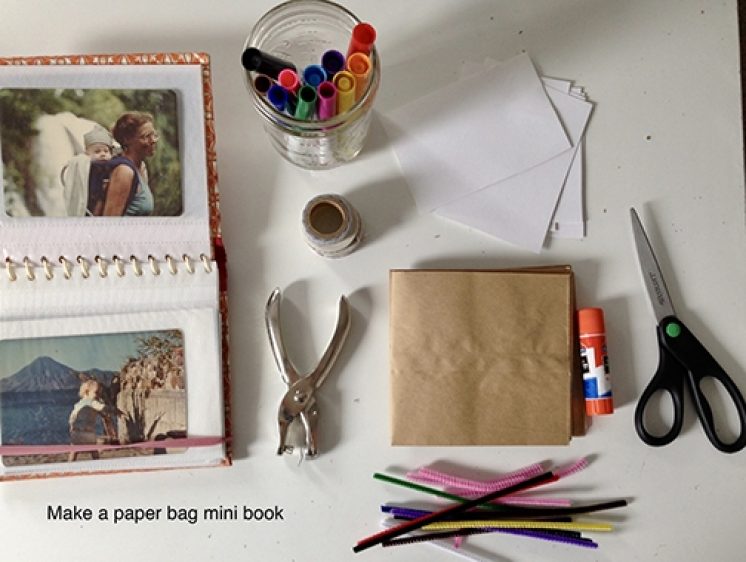
by Colie Haahr, CMNH Educator
Make a mini paper bag scrapbook, nature journal, or keepsake! These books are fun for kids to put together, and the open end of the paper bag creates a pocket to store pictures, ticket stubs, or small items from a nature walk. Pipe cleaners make the book easy for kids to bind, and it’s easy to add more pages. String or binder rings can also be used to bind the book.
Use washi tape or glue to add photos, or print photos on copy paper so that kids can use a glue stick to add them. This also makes it easier to replace a photo if anything happens to it during the art making project. Kids can label photos, write favorite memories, or tell the story of each photo and have a grown up help with the writing part if needed.
Materials Needed:
- Markers
- Washi tape
- Glue stick
- Photos - printed on copy paper
- Scissors
- Paper
- Pipe cleaners
- Hole punch
- Paper bags
Directions:
- Fold the paper bags in half, and punch two holes in the folded end of the bags. It’s difficult to hole punch through more than one bag at a time, so be sure to line the holes up on each bag
- Stack several bags together so that the folded ends are together, and the holes line up
- Use the pipe cleaners to bind the book together by feeding it through the holes
- Twist up the pipe cleaners, and cut off any excess
- Start decorating and writing in your book! Use the glue stick to add photos or drawings on paper
- Use the open ends of the bags to create pockets for keepsakes or photos
- Theme ideas: nature journal, teacher gift, family book, share favorite family activities and memories, make up a story
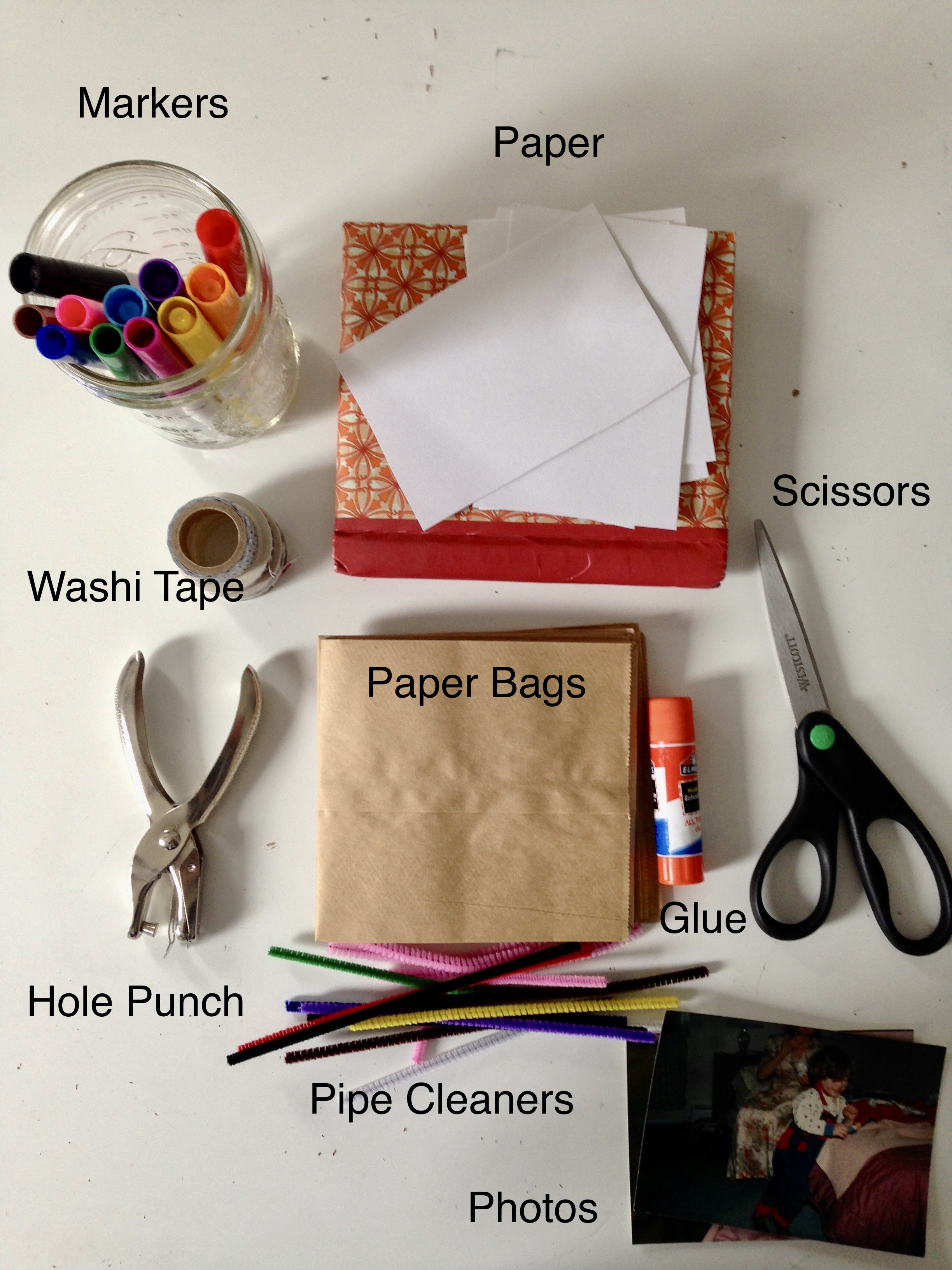
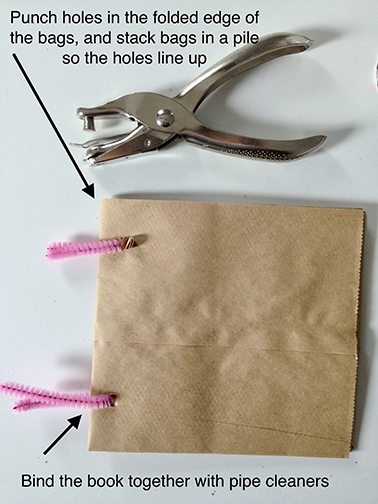
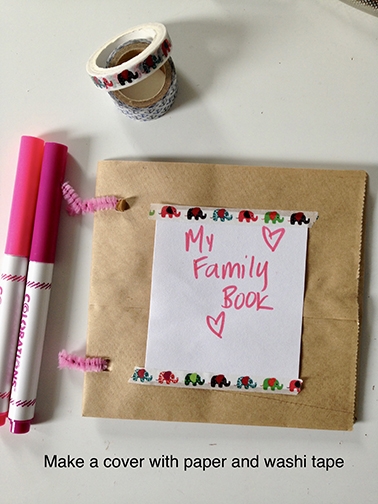
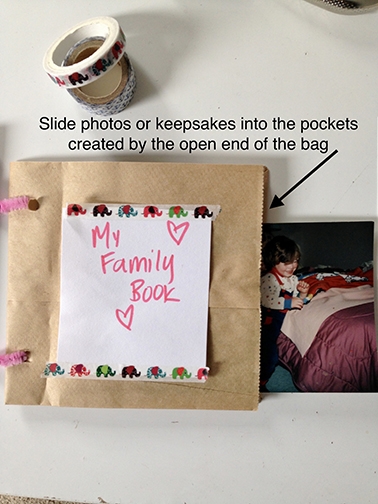
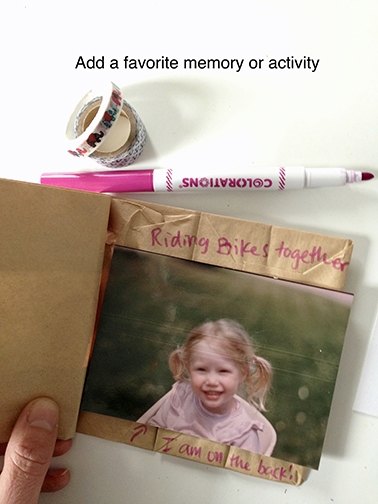
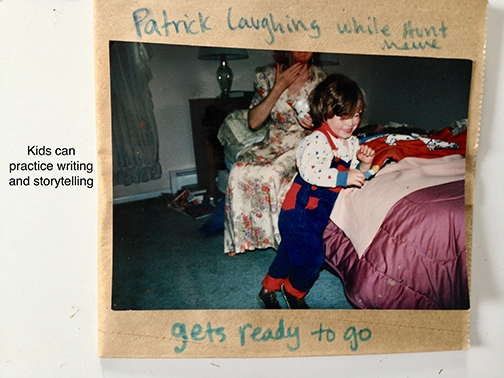
Up-Cycled Planters
By Colie Haahr, CMNH Educator
This is an easy, low-mess art project that kids can work on independently. Use old containers and washi tape to make an “up-cycled” planter. What is up-cycling? It’s using materials that would otherwise be discarded to make something new. We do many up-cycling activities at the museum to help reduce waste, and to allow kids to be creative with their projects by challenging them to think of new uses for things.
This project provides a good opportunity to talk to kids about reducing waste, and some ways to do that at home. Up-cylcing is just one thing kids can do to help keep the earth healthy, and it’s a great way to cut down on art supplies and packaging if you are using things you already have. The book Not For Me, Please! I Choose to Act Green, by Maria Godsey, is a nice story to read with kids that shows them some concrete choices they can make to help reduce waste. We recently added this book to our collection at the museum.
This is also a great project if you would like to give someone a hand made gift without getting out paints or any messy supplies! You can use the planter to grow something from seeds, or you can use it to put a small houseplant inside.
Materials Needed:
- Empty play dough containers with lids
- Or: A different type of container that is safe to use
- Washi tape
- Optional: scissors
- A house plant, or soil and seeds for planting
Directions:
- The first step is to make sure the container you are using is safe to use and clean. Play dough containers work well. Be sure there are no sharp edges, and carefully supervise if you choose to use glass. Mason jars and other thick glass containers do not break easily
- If you are using a plastic container, you may opt to poke a hole in the bottom with scissors for drainage for your plant. This step should be done by an adult
- Use washi tape to decorate the outside of the container by carefully adding it one strip at a time
- If you want to plant something, add soil and plant the seeds according to the instructions on the seed package.
- If you want to add a houseplant that is already growing, carefully place it inside
- If you are using a play dough container, use the lid to catch extra water under the planter
- Ask: what three things do plants need to grow?? They need soil, sunlight, and water! Place your plant in a spot where it can get some sun, and be sure to water it!
There are more up-cycle project ideas on the museum’s Pinterest account:
Links:
Check out some of our Educator's Favorite Up-Cycle Projects over on Pinterest:
https://www.pinterest.com/kidmuseumnh/cmnh-educators-picks/upcycle-projects/
Blog post that inspired the planters:
First Friends: BIG and small
By Meredith Brustlin, CMNH Educator
Hello Song:
Hello it’s time to play
Let’s have some fun today!
Let’s clap our hands
And wiggle our toes
A hug...and a kiss...and away we go!
Hello (insert name here) it’s time to play
Hello (insert name here) it’s time to play
Hello (insert name here) it’s time to play
We’ll have so much fun...hooray!
Open Them/Shut Them (action song)
Open them, shut them
Open them, shut them
Give a little clap-clap-clap
Open them, shut them
Open them, shut them
Lay them in your lap-lap-lap
Creep them, creep them, creep them, creep them
Right up to your chin-chin-chin
Open up your little mouth…
But do not let them in!
Five Little Kittens (action rhyme)
Five little kittens standing in a row,
They nod their heads to the children so!
They run to the left,
They run to the right
They stand and stretch in the bright sunlight!
Along comes a dog who’s looking or some fun…
ME-OW! See those little kittens run!
Sugar Babies (action rhyme)
Roll, roll sugar babies
Roll, roll sugar babies
Push! Pull! Clap-clap-clap!
“ “
BIG! Little! Clap-clap-clap!
“ “
Up! Down! Clap-clap-clap!
The Royal Duke of York (bounce/movement rhyme)
The royal duke of york,
He had 10,000 men,
He marched them up the mountainside
And marched them down again!
Oh, when you’re up you’re up
And when you’re down you’re down
And when you’re only halfway up…
You’re neither up nor down!
Hurry, Scurry, Little Mouse (action rhyme/tickle)
Hurry, scurry, little mouse
Starts down at your toes…
Hurry, scurry, little mouse
Past your knees he goes...
Hurry, scurry, little mouse
Past where your tummy is…
Hurry, scurry, little mouse…
Gives you a mousey kiss!
Shake your shaker! (prop song)
If you’re happy and you know it, shake your shaker...one time! ONE!
If you’re happy and you know it, shake your shaker...two times! ONE! TWO!
If you’re happy and you know it, and you really want to show it
If you’re happy and you know it, shake your shaker...three times! ONE! TWO! THREE!
If you’re happy and you know it, shake your shaker...four times! ONE! TWO! THREE! FOUR!
If you’re happy and you know it, shake your shaker...five times! ONE! TWO! THREE! FOUR! FIVE!
If you’re happy and you know it, and you really want to show it
If you’re happy and you know it, shake your shaker!!!
Goodbye Rhyme (action rhyme)
This is big, big, big
And this is small, small, small
This is short, short, short
And this is tall, tall, tall!
This is fast, fast, fast
And this is slow, slow, slow
This is yes, yes, yes
And this is no, no, no
This is hi, hi, hi
And this is bye, bye, bye!

